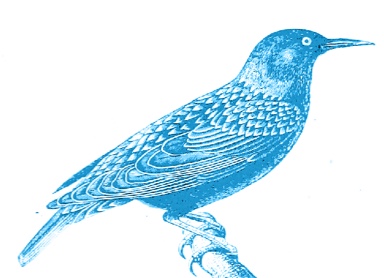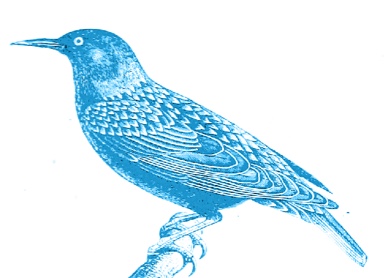To be clear, the “I” in the title of this post refers to Beth Terry, whose book of the same name we discussed in The Motherhood today. The “I” who is writing this post is pausing to stare somewhat guiltily over her shoulder at the plastic clamshell container, plastic zipper lock bags, plastic ballpoint pens and plastic aspirin bottle on her kitchen counter. And that’s just the counter–we won’t even discuss the plastic in the rest of the room. And house.
But Beth’s book isn’t designed to make us feel guilty. It’s written with the intent of helping anybody take whatever steps they’re ready for to reduce plastic in their lives, up to eliminating it all together. Beth decided to write the book after she stumbled across an article about the plastic pollution problem in the ocean and saw a photo of a dead baby albatross full of everyday plastic pieces that its mother had fed to it thinking it was food. Of the article, Beth says, “It broke my heart. And that was my reason for seeing if I could live without buying new plastic.”
It occurs to me, as a human mama, that I also feed my children a lot of things I think are good for them. But I do worry that the plastic that food comes packaged in could somehow be as harmful to my babies as to that baby albatross. And I know I’m not alone in my concerns. Many of the panelists joining the discussion on Beth’s book feel the same. Panelist Alicia Voorhies says her biggest concern about plastic is leaching chemicals, and panelist Lisa Sharp is worried about “the health effects on us and animals.” Panelists Kitchenstew and Lori pointed out the pervasiveness of plastic–it’s even in chewing gum! Theecochic, another panelist, admitted honestly that her biggest concern about plastic is that she relies on it so much. It’s so easy to do, and so hard to avoid. Panelist Danielle says, “My biggest concerns about plastics are that they are trashing our planet– from preproduction to litter.”
It’s everywhere. It’s bad for us, other animals, and the planet, in ways we don’t even fully understand yet. If it were only bad, it would be easy to get rid of. But it’s so useful and convenient, as we all know. What are health-conscious, environmentally-conscious, busy and cash-strapped moms to do? That’s where Beth’s book, and her blog, come in, with practical, realistic options anyone can use to help get plastic out of their lives.
 What if you’re just a beginner at this plastic-free stuff? What’s the first thing you should do? Beth says that the best “first thing” depends on the person doing it. “Start with the one thing that is easiest for you and make it a habit. And don’t beat yourself up, but don’t let yourself off the hook too easily either.” You may have started the shift without even knowing it–lots of us have stopped buying bottled water and are using stainless steel bottles. Even more of us are using reusable grocery bags. Lori advises, “Incorporating the change into your routine works. I leave reusable shopping bags in the front seat of my car and now I rarely forget them.” And as panelist PhDinParenting observes, “A lot of the changes we make become second nature after we’ve been doing them for a while.”
What if you’re just a beginner at this plastic-free stuff? What’s the first thing you should do? Beth says that the best “first thing” depends on the person doing it. “Start with the one thing that is easiest for you and make it a habit. And don’t beat yourself up, but don’t let yourself off the hook too easily either.” You may have started the shift without even knowing it–lots of us have stopped buying bottled water and are using stainless steel bottles. Even more of us are using reusable grocery bags. Lori advises, “Incorporating the change into your routine works. I leave reusable shopping bags in the front seat of my car and now I rarely forget them.” And as panelist PhDinParenting observes, “A lot of the changes we make become second nature after we’ve been doing them for a while.”
Those are some of the easier changes to make. But as Kitchenstew points out, having kids makes going plastic-free very challenging. Two big challenges are toys (since most little kids’ toys are made out of plastic) and goody bags at parties (the bags are made of plastic and they’re often filled with cheap plastic toys). For the former challenge, consider buying used toys on eBay or Craigslist, as Danielle does. As for goody bags, if you can’t bear to eliminate gifts for party guests entirely, why not try something plastic-free and still fun, like flower seeds in compostable planters or cotton thread friendship bracelets?
Perhaps the biggest challenge to plastic-free living with kids is containers for their food, especially on the go. Fortunately, as more of us raise our voices to ask for options, more choices appear. Lunchbots are a great stainless steel alternative. The Extraordinary Baby Shoppe carries several stainless steel feeding options for the smallest kids. For reusable food storage bags, check out Lunch Skins or Three Little Birds Design Company. More great ideas can be found in this blog post about traveling plastic-free with snacks.
 Those are some great ideas for keeping plastic out of the garbage–but what about what we put the garbage itself in? Some municipalities require trash bags. One solution is to reduce your trash (and therefore, the number of trash bags you use) by composting and recycling whenever possible. Another is to use corn-based trash bags or using plastic bags, like bread bags, that you were just going to throw out anyway. Panelist Diane Mac suggests wrapping wet non-compostables in newspaper. If you aren’t required to use bags, consider putting your trash in a metal can that you can rinse out as needed with a hose. And check out Beth’s blog post on collecting garbage without plastic bags.
Those are some great ideas for keeping plastic out of the garbage–but what about what we put the garbage itself in? Some municipalities require trash bags. One solution is to reduce your trash (and therefore, the number of trash bags you use) by composting and recycling whenever possible. Another is to use corn-based trash bags or using plastic bags, like bread bags, that you were just going to throw out anyway. Panelist Diane Mac suggests wrapping wet non-compostables in newspaper. If you aren’t required to use bags, consider putting your trash in a metal can that you can rinse out as needed with a hose. And check out Beth’s blog post on collecting garbage without plastic bags.
It’s all very well to contribute to a cleaner planet by using less plastic, but try to get yourself clean without plastic? You’re facing a challenge. Let’s play a game: you run out to the grocery store, find a non-plastic container of shampoo or mouthwash, and run back. First one home gets a prize. Go on. I’ll wait here.
(crickets chirping)
Couldn’t find one? Not surprising; it’s hard to do. Our panelists were able to come up with some choices for those truly committed to kicking the plastic. Shampoo bars, especially those not wrapped in plastic, are a good option. Lisa Sharp uses concentrated mouthwash so that the bottle is smaller and lasts longer, creating less waste. You can make your own hygiene products, too, and Beth’s book and blog offer ideas for plastic-free alternatives. You may even find alternatives to plastic in places you didn’t even realize plastic lurks, like books. But Beth has even found a way around that: “FYI: This book was created without plastic materials. My publisher found a way to do without plastic coating, plastic glue, synthetic thread, etc. It’s really cool looking. But it’s also available in Kindle and NOOK. “If you’re interested in a signed copy of the book, they’re available through Beth’s website, with a portion of the proceeds to the Plastic Pollution Coalition.




























